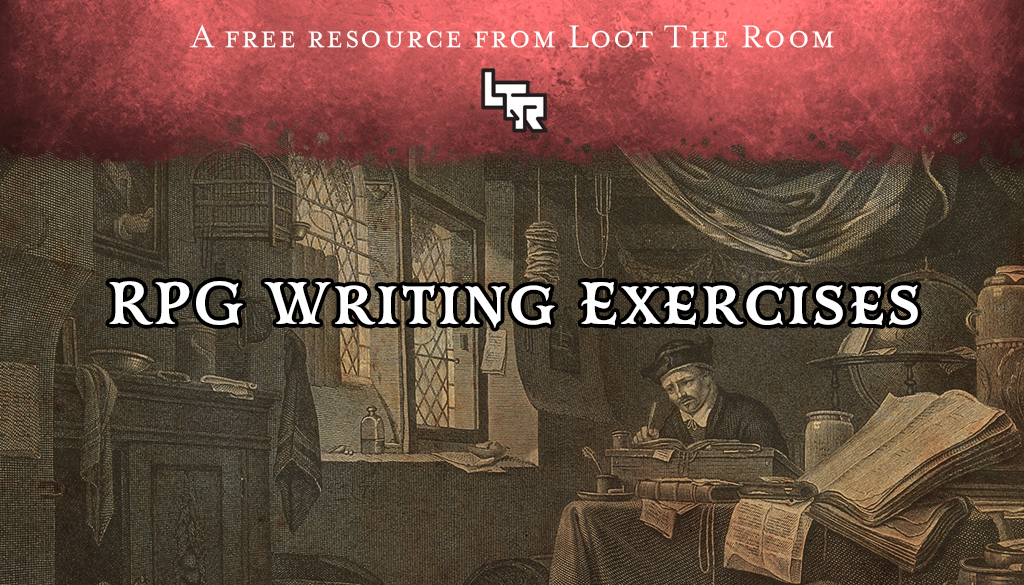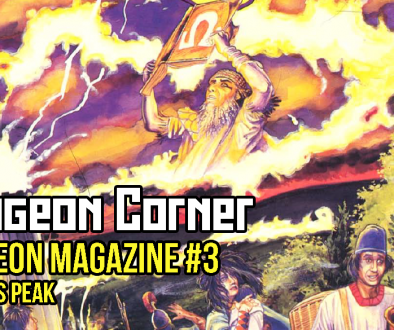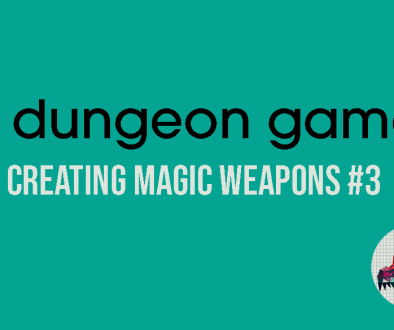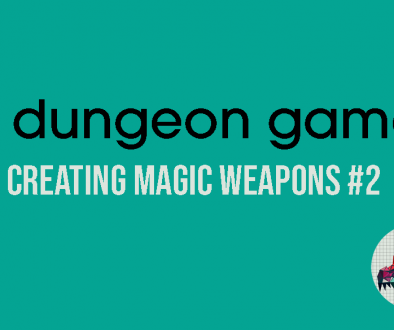RPG Writing Exercises
This was originally posted in February 2018. The link and images got broken when I moved to this new site, and I’m slowly fixing things. This has now been updated, though the text remains the same as it was in 2018.
Last week I got talking to a few people on Twitter about writing habits – in particular, we were talking about writing exercises and warmups. Historically they’re not something I’ve made much use of, but we were strongly encouraged to warm up while I was doing my Masters and I’ve since discovered that (for me, at least) warming up before working on something can be very beneficial.
There are tons of suggestions for methods of warming up available online, but they are all geared towards fiction writers. And that got me wondering whether warming up might also be useful for GMs and RPG designers. I know that when I go into a new project – or an old one that I haven’t looked at for some time – it can often be hard to get into the groove and start producing work that I’m happy with.
Warm ups are generally not intended to produce finished work (or even work that you ever intend to develop or show to anybody). Instead they’re designed to turn off your inner editor and get you creating. That’s all well and good, but I figure that for gamers it might also be nice if at the end of your warm up you have something that you can use in a session (if you’re a GM) or develop further for a project (if you’re a creator of some kind).
It turns out that we already have a lot of resources for generating these kinds of exercises, in the form of the thousands of random roll tables and tools for generating randomised content that this hobby is filled with. So, with that in mind, I’ve come up with some ideas for writing warm ups for RPG creators, and I’ve compiled them into their own roll table.
How To Be Warm
Before you dive into whatever project you’re working on today, roll on the table below (I’ve tried to make sure that the prompts that rely on external resources don’t require you to have commercial products that you might not have access to). Read the prompt, then spend 20 minutes responding to it in whatever way you like. Try to write in a stream of consciousness, not stopping to reread your work or edit it in any way. Focus more on the fluff of what you’re writing, rather than the mechanical aspects of it. Game balance, mechanical integrity, and actual usability can come later. For now, it’s more important that something exists at the end of the 20 minutes that didn’t exist before it, whether you intend to ever look at it again or not.
More importantly than anything else – have fun. Write something ridiculous that you wouldn’t normally try. Embrace the fact that it might suck, and allow yourself to build something that might not ever get used.
- Make a creature using this Seventh Sanctum Legendary Creature Generator. Write a monster manual entry for it. No stats; just figure out where it comes from, what’s unique and different about it, and what its driving motivations are. If you have time, brainstorm some ideas for fun abilities it might have.
- Use this Quest Item generator to create a list of items. Spend a minute or so writing a very quick description for each items generated – what does it look like, who made it, and what kind of thing does it do?
- Locate your favourite name generator. Get yourself a name. Then spend 15 minutes writing about that person. Who are they, what do they do, what do they want, and how do they intend to achieve it? Bonus points if you get something useful out of a truly ridiculous name.
- Generate a place name and write about that place’s dark secret, and about the one person who knows that secret.
- Grab a random map from Uncharted Atlas. Spend 20 minutes writing about one historical event that took place there.
- Generate an opening line and write an event from a character’s backstory. This doesn’t have to be an already-existing character. (Since that isn’t specifically a fantasy generator, not all of the lines will be suitable. Bonus points if you can make it work anyway).
On top of these six ideas, I also like to warm up using the trinket table in the Players Handbook (or with my own trinkets releases). [Update 2020: you could also use the random trinket generator on this very website!] I like to take a random trinket and then simply write about where it came from and what – if anything – it does that might not be obvious when the item is first encountered.
Let me know what you think of these, and if you create anything you like using them feel free to share it in the comments!
Tomorrow we’ll be looking at the best new releases on the DMs Guild in our monthly roundup, and on Thursday we’ll be returning to Shadepoint. Don’t forget to grab a copy of Cities: Shadepoint if you haven’t already – it’s completely free!
If you enjoyed this post or found it useful, consider leaving me a tip on Ko-Fi.
Image Credit: An alchemist peacefully writing in a room strewn with papers. Engraving by V.A.L. Texier after Gianni after T. Wyck. Credit: Wellcome Collection. Attribution 4.0 International (CC BY 4.0)





Terror At Tightwillow Pond – A Shadepoint Encounter – Loot The Room
February 27, 2024 @ 2:55 pm
[…] Last time I said that this post would arrive on Thursday, but as with most projects I take on it ended up taking a little longer to complete than I had expected. Still, we’re here now and that’s all that matters! […]